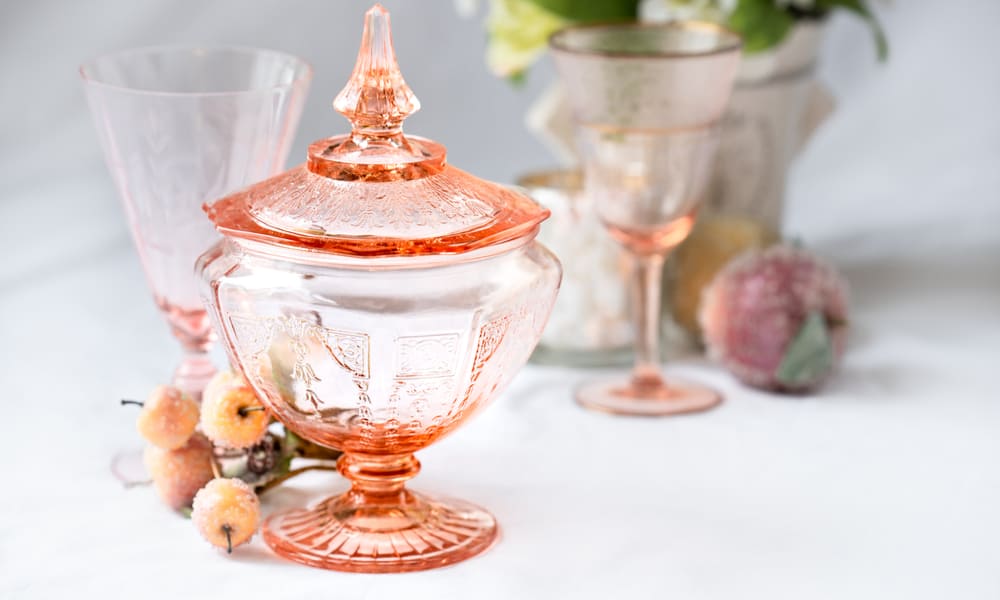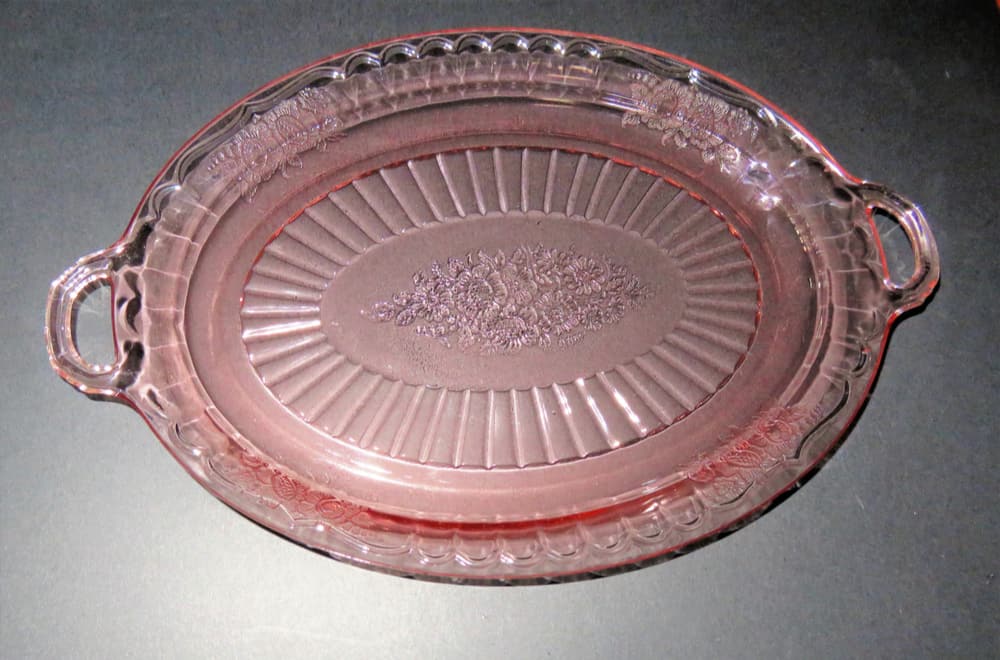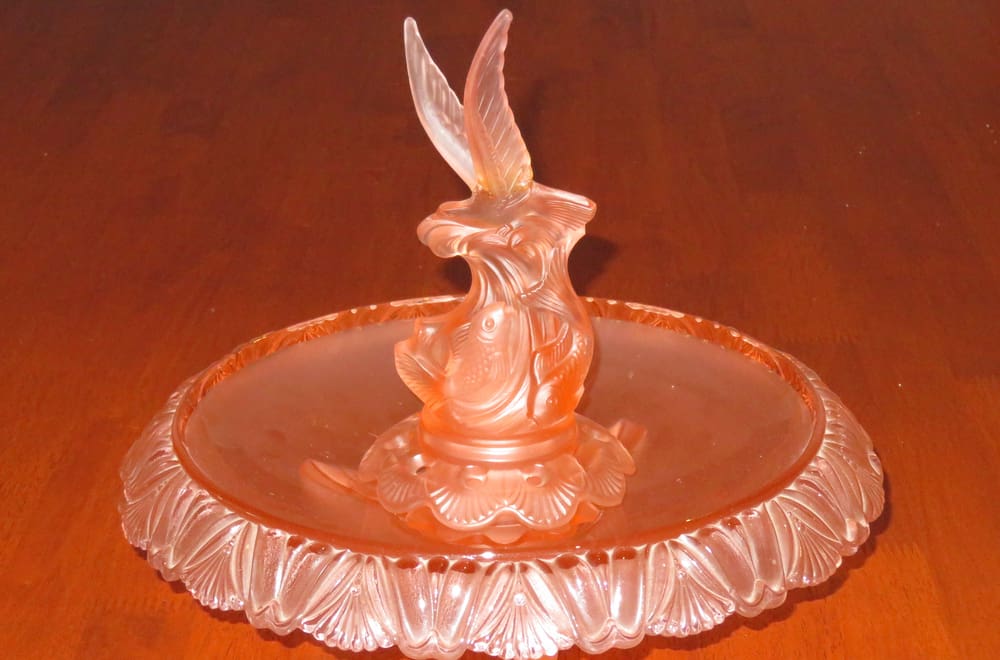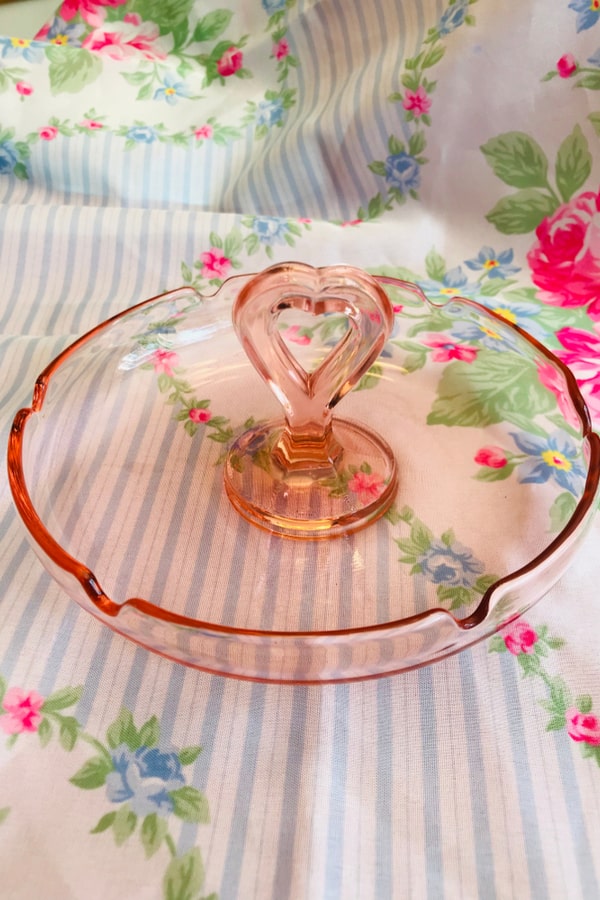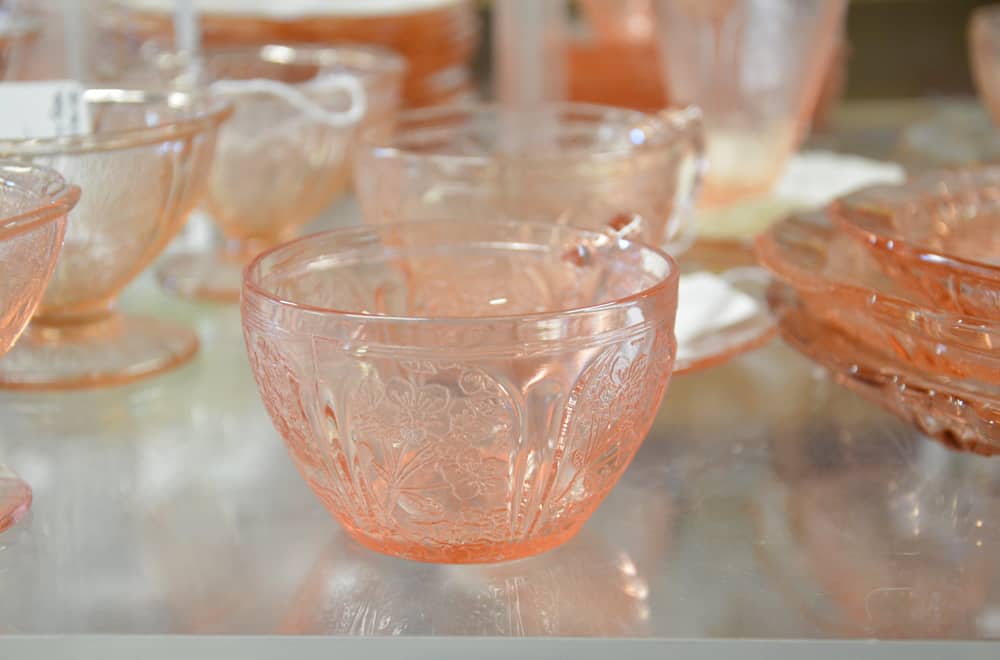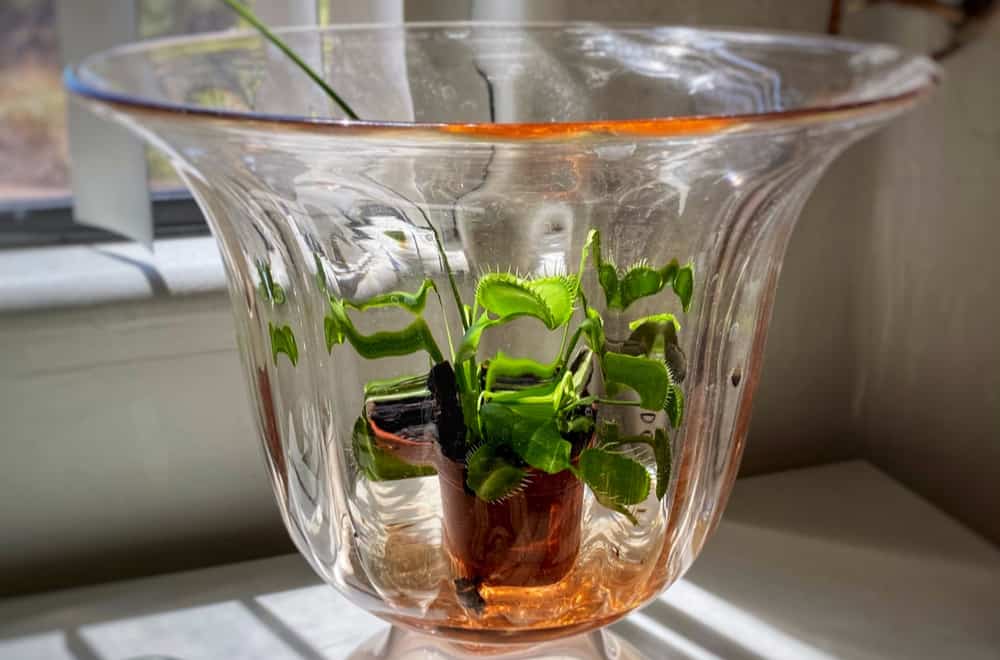Pink Depression glass appeared on the market during the Great Depression, and Americans accepted the new trend at once. They could choose among rose tint, rose glow, wild rose, Cheri-glo, and flamingo shades.
Although these glassware pieces were a cheap substitute for crystal in the 1930s, they are desirable collectibles nowadays. You can find them online, in antique stores, and in flea markets. Pink pieces are among the most sought after and valued, and you can expect prices ranging from a few bucks to over a hundred dollars for one.
Table of Contents
Pink Depression Glass History
Depression glass is affordable mass-produced glassware popular from the 1920s to the 1930s, but you can find pieces produced by the 1950s. Almost every American family possessed at least one of these cheap items during the Great Depression.
Over twenty glass companies produced this glassware type, but only seven included pink variations in their offer. Besides standard unprocessed pieces that were put up for sale directly from the mold, you can also find one more valuable type.
The elegant glass was different and more stylish because manufacturers hand-finished it. Remember that this glassware type was manufactured during the same period, but it is not considered Depression glass.
Pink Depression Glass Identification
Pink Depression Glass Pattern
Glass companies designed and introduced over a hundred Depression glass patterns during the three production decades. Each manufacturer had a signature style, including Royal Lace, Cameo, American Sweetheart, Mayfair, Tea Room, and Princess.
Unfortunately, finding these sought-after patterns in a set or even pairs is challenging. Therefore, collectors often mix patterns and colors or pair rare and affordable pieces. A pink variation is trendy nowadays, and you can pick out any of the different hues, depending on your preferences and glass availability.
Each item’s price will depend on rarity and particular pattern. It is on you to learn as much as possible about the glassware you want to collect. For a start, pay attention to distinguishing features, such as:
- Etched details
- Atypical shapes
- Opalescent trim
- Swirls and arcs on the edge
- Opaque glass
- Bird, fruit, flower, petal, leaf, and loop motifs
- Desirable geometric and hobnail patterns
Sierra-Adam pattern
The Jeanette glass company produced the Sierra pattern that collectors consider the Holy Grail of Depression glass. It shows the feather depiction in combination with the motif pinwheel.
Glass with this pattern is expensive, and you need to set aside at least $500 per piece. On the other hand, a standard Depression glass featuring only the Adam design is much cheaper.
Miss America and Mayfair pattern
The Anchor Hocking Glass Co. designed two pink Depression glass types from 1931 to 1937. The Mayfair open rose design and Miss America were famous for the unique raised diamond pattern.
Nowadays, you can find numerous saucer sets, vases, dinner plates, candy dishes, and cups in both patterns. However, some rare pieces can be costly, including:
- The Miss America divided relish dish
- The Mayfair three-legged console bowl
It is hard to find any of them on the market, and their price typically reaches thousands of dollars. Besides, sizable and unique glassware is generally worth more than ordinary bowls and plates.
American Sweetheart pattern
The Macbeth-Evans Glass Co. created this design from 1930 to 1936, and their thin glass has the most delicate shade of pink ever. The company produced it in large quantities.
However, the number of particular pieces made in this style is limited, making some of them precious for collectors. For instance, pitchers are rare and typically cost about $750.
Cameo pattern
The Anchor Hocking Glass Co. produced Depression glass in Cameo (Dancing girl, ballerina) pattern from 1930 to 1934. Dishes with a string of pearls became their third most popular line.
Unlike standard green Cameo pieces, those made in pink color are rare because of limited production. Therefore, some items can cost hundreds of dollars.
Princess pattern
Princess is one more masterpiece that the Anchor Hocking Glass Co. produced from 1931 to 1934. They designed this wildly popular pattern with scalloped edges in green, pink, and topaz colors. However, pink pieces are common and not particularly valuable on the current market.
Royal Lace pattern
Royal Lace, manufactured from 1934 to 1941, is probably the most sought-after Depression glass pattern the Hazel-Atlas Glass Co. ever designed. It is relatively rare and valuable, and the pink variation is typically worth about $100.
Sharon
The Federal Glass Co. created chunk Sharon pattern (Cabbage Rose), the most affordable among numerous Depression glass types.
Even though it is not delicate and elegant as some other models, this pink glassware comes at a reasonable price, and you can quickly find a complete set.
Pink Depression Glass Types
You can find numerous Depression glassware types available on the market, such as:
- Trays and cake plates
- Plates
- Teacups and saucers
- Glasses and goblets
- Candy dishes
- Pitchers
- Cream and sugar sets
Pink Depression Glass Color
It is possible to recognize numerous Depression glass colors produced during the Great Depression era, including:
- Crystal and iridescent
- Yellow, canary yellow, monax, and amber
- Tangerine, lavender, anythest, and alexandrite
- Light to medium green and jadeite (translucent green)
- Cobalt and light blue
- Delphite, topaz, and ultramarine
- Pink, red, and amethyst
- White milk glass
- Opaque black
Pink Depression Glass Condition
As with most collectibles, the Depression glass condition is a crucial factor that affects its value. Be aware that the fast production process left numerous original flaws, such as:
- Bubbles
- Raised rough spots
- Inconsistent coloring
- Straw marks
- Mold imperfections
They won’t significantly affect the price, and many collectors enjoy these inconsistencies.
On the other hand, you can notice some damage caused by time and long-term use. While minor condition issues often won’t decrease the glass value, significant ones will make it cheap or even worthless.
Minor imperfections include:
- Flea bites, tiny chips around the piece’s rim, handle, base, or raised decorations
- Minor scratches as a result of use are typically considered patina
Significant condition issues always decrease the glass price, and the most common are:
- Cracks
- Chips
- Deep scratches
- Unintended etching
- Cloudy (sick) glass
Pink Depression Glass Manufacturers
Most manufacturers produced Depression glass in bulk and by machine and sold it in flour sacks and cereal boxes. They often gave these pieces as gifts in grocery stores, movie theaters, and gasoline stations or used them as promotional items.
You can recognize seven major American glass manufacturers designing glass, including pink pieces, during the Great Depression from 1923 to 1939. They produced two Depression glass classes, including:
- Depression glass that was distributed right after removing from molds
- Elegant glass that included hand finishing after removing items from the mold
Pink Depression glass manufacturers |
|
| Production year | Company name |
| 1923 to 1933 | Indiana Glass Co. |
| 1927 to 1932 | US Glass Company |
| 1927 to 1938 | Federal Glass Co. |
| 1927 to 1939 | (Anchor) Hocking Glass Co. |
| 1928 to 1938 | Jeannette Glass Co. |
| 1929 to 1936 | Macbeth-Evans Glass Co. |
| 1930 to 1938 | Hazel-Atlas Glass Co. |
Typically, large companies produced Depression glass, while so-called hand houses manufactured elegant glass. These small companies tried to embellish inexpensive items by hand-finishing them.
Pink Depression Glass Value
When looking for inexpensive pink Depression glass, your best options are everyday items like:
- Cups
- Sherbet dishes
- Saucers
- Bread and butter plates
- Cream and sugar sets
Most of these items come at reasonable prices. Interestingly, you can find some pink cream, teacups, and sugar sets with a simple wheel etching for a few dollars. On the other hand, the same set in favorite collectible patterns can reach a few dozen bucks.
Highly valued pink depression glass |
||
| Production year | Depression Glass | Value |
| 1929 to 1933 | Cubist butter dish | $40 |
| The 1930s | Old colony pink flower bowl | $30 to $60 |
| 1928 to 1932 | Iris (Corsage) wine stem | $25+ |
| 1937 to 1938 | Petal swirl pink vase | $20 to $25 |
| The 1930s | Princess pink footed tumbler | $15 to $50 |
| 1936 to 1946 | Windsor pink pitcher | $15 to $35 |
| 1936 to 1946 | Windsor pink pitcher | $15 to $25 |
| The 1930s | American sweetheart pink cup and saucer | $10 to $25 |
| 1936 to 1946 | Windsor pink tumbler | $10 to $17 |
| 1936 to 1949 | Queen Mary pink bowl (nappy) | $7 to $15 |
| 1934 to 1936 | Hobnail pink sherbet dish | $5 to $10 |
| 1936 to 1949 | Queen Mary pink bread plate | $2 to $10 |
| 1936 to 1949 | Queen Mary pink cup | $2 to $5 |
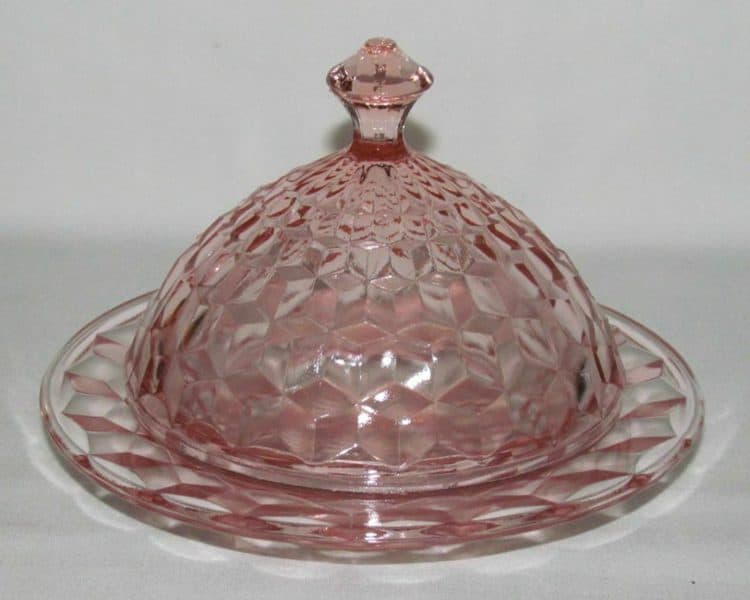
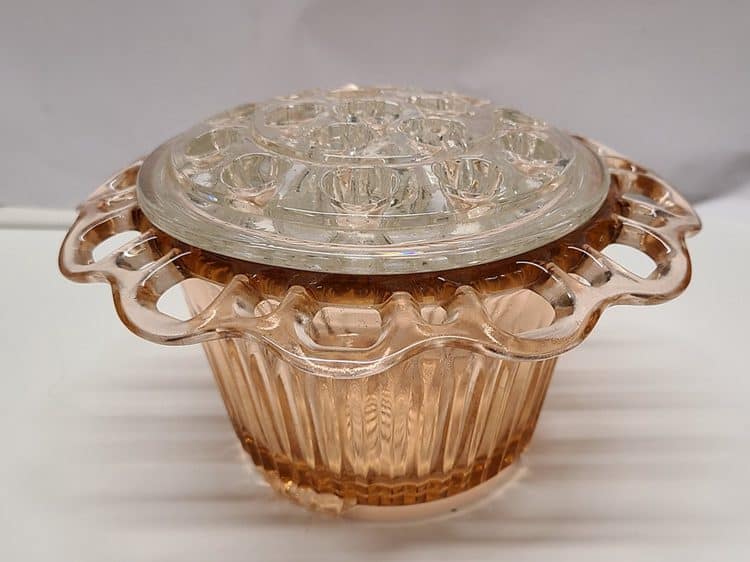
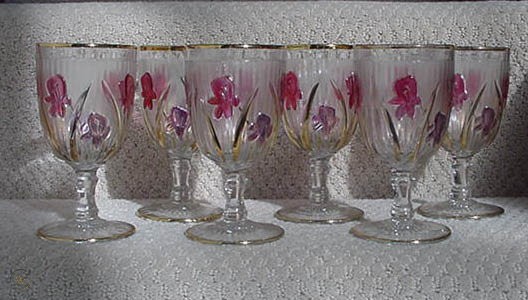
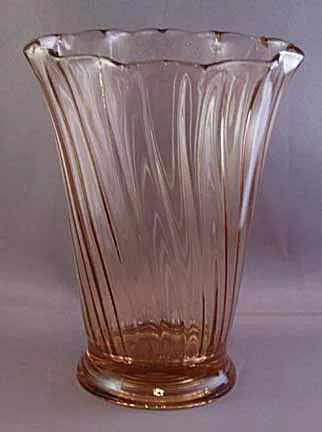
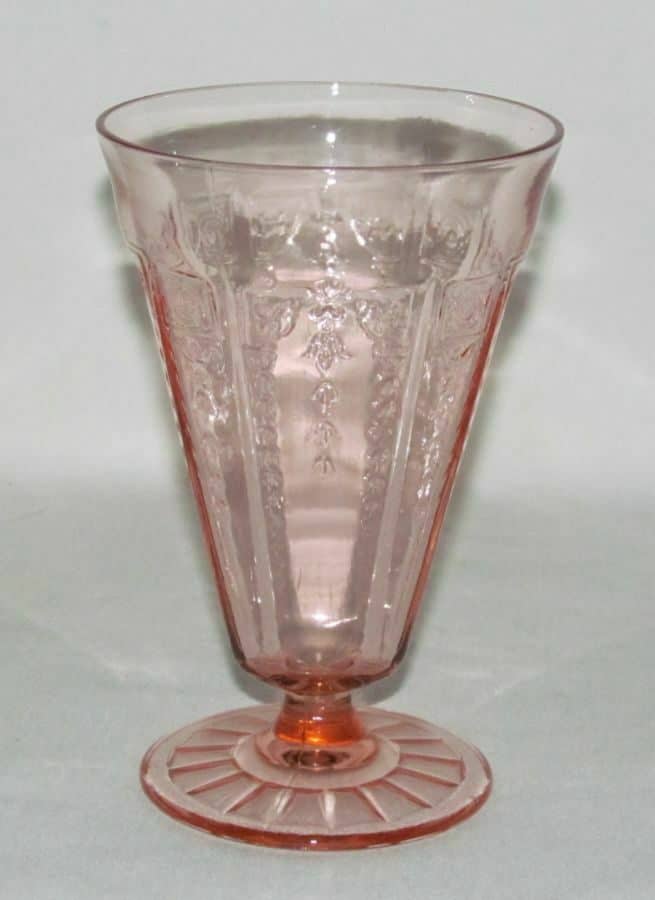
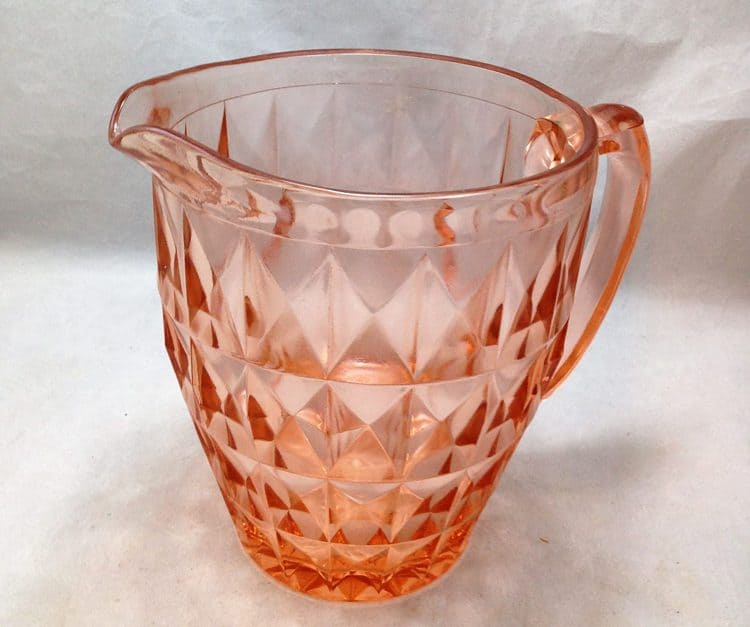
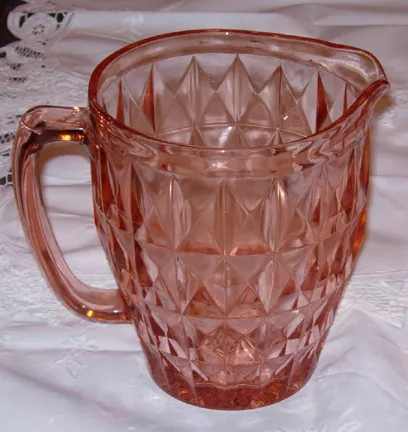
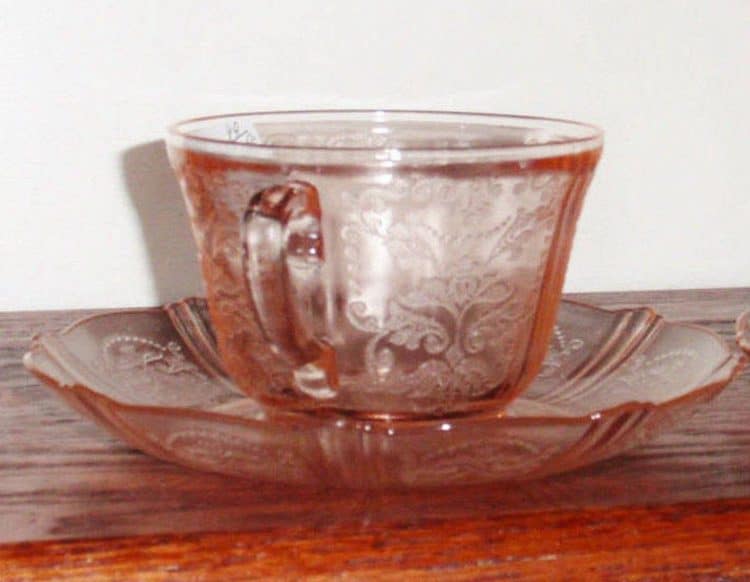
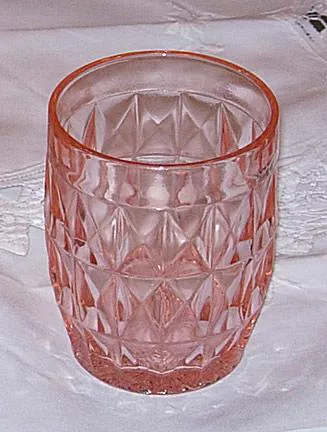
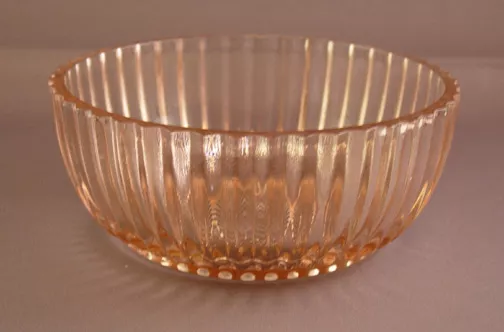
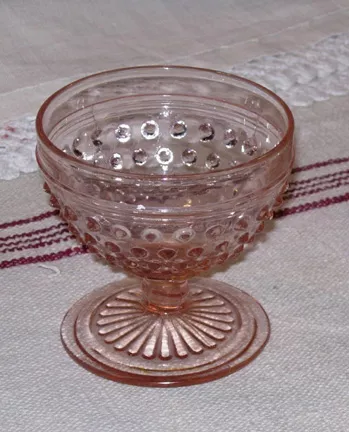
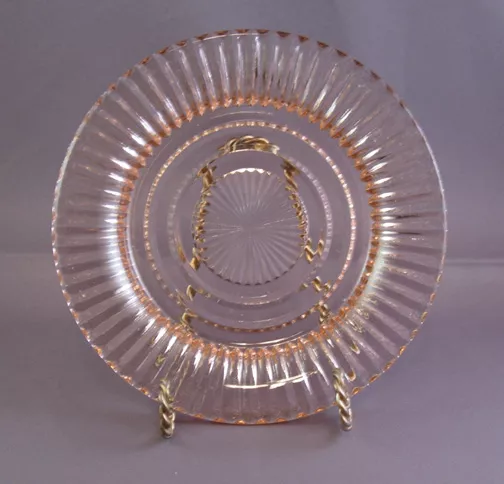
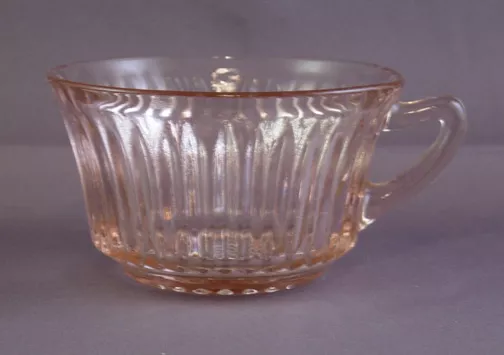
In most cases, glasses and plates cost $15 to $40, while you need to set aside at least $100 for more sizable items. Most sets reach over $200.
For instance, one Macbeth-Evans products admirer paid $30 for a set of seven dessert plates in decent condition. On the other hand, six Mayfair Open Rose soup bowls in excellent condition reached $60.
Most valuable pink depression glass |
||
| Year | Pink depression glass type | Price |
| 1928 | Religious Jesus and Mary pink statue | $850 |
| 1936 | Jeannette pink Windsor ashtray | $513 |
| The 1900s | Miss America pink covered butter dish | $485 |
| 1930 | Pyramid pink sugar creamer with tray | $475 |
| 1930 | Ginger pink cookie jar | $475 |
| The 1900s | Vanity (dresser) pink set | $443 |
| 1935 | Miss America pink pitcher with ice lip | $425 |
| 1935 | Miss America pink ruffle dessert dish | $400 |
| The 1900s | Decanter Western transfers | $385 |
| The 1900s | Jeannette pink Adam vase | $342 |
| The 1900s | Moon and stars pink jewelry box | $300 |
| 1930 | Pink girl holding a fawn flower frog | $251 |
| 1930 | Federal pink mixing bowl | $241 |
| The 1900s | Cat and dog pink pepper and salt shakers | $225 |
| The 1930s | Tidbit pink tray with candlesticks | $174 |
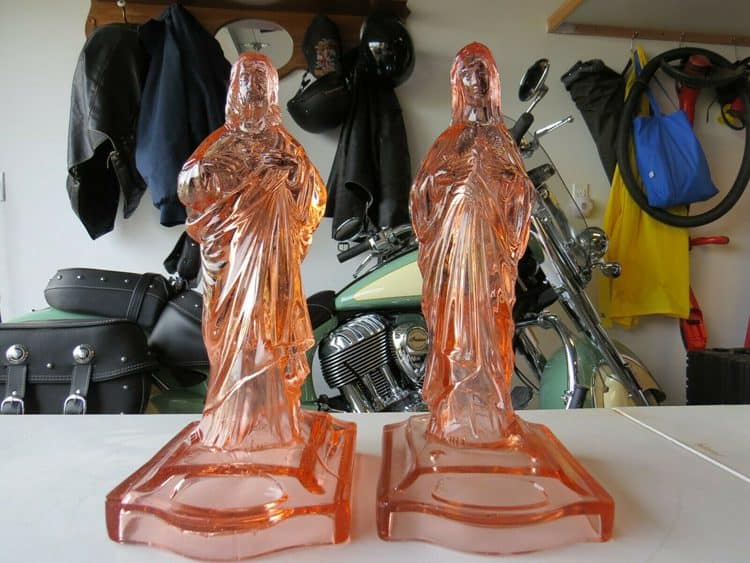
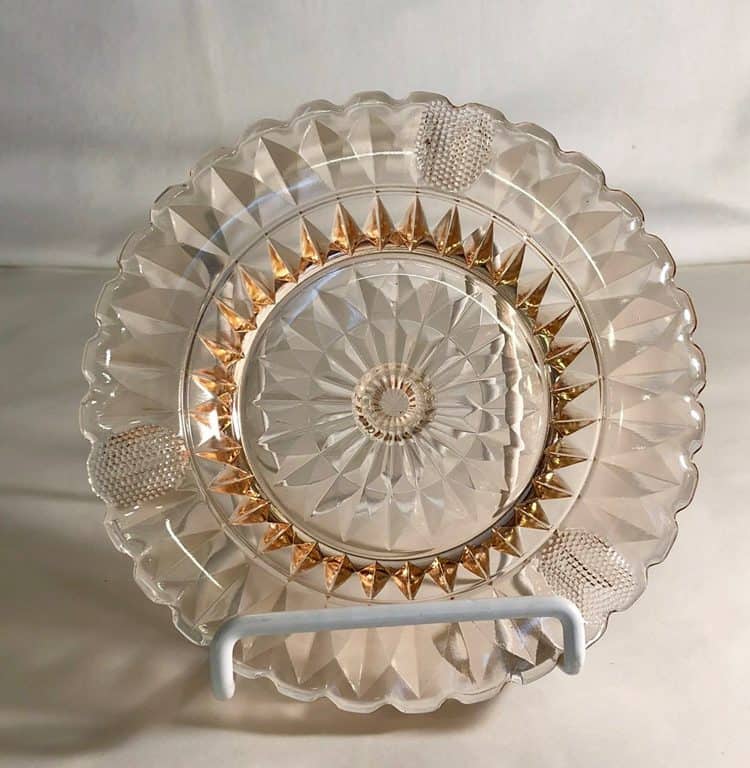
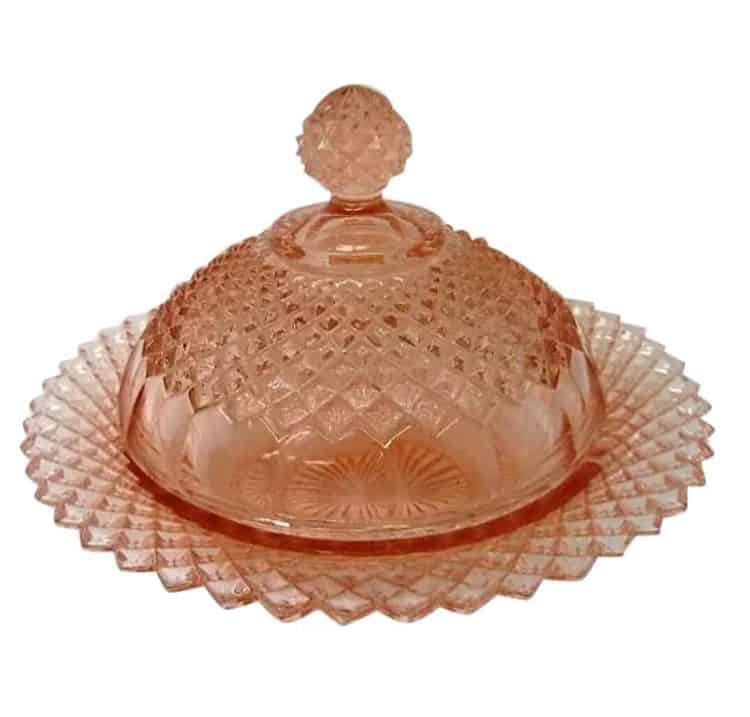
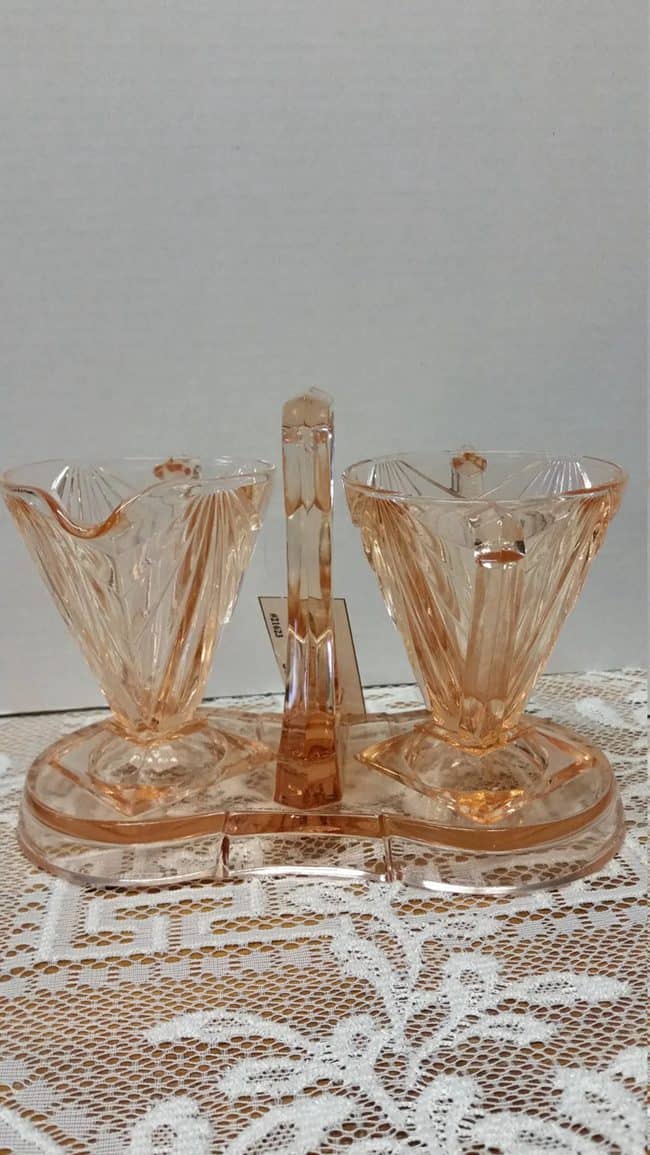
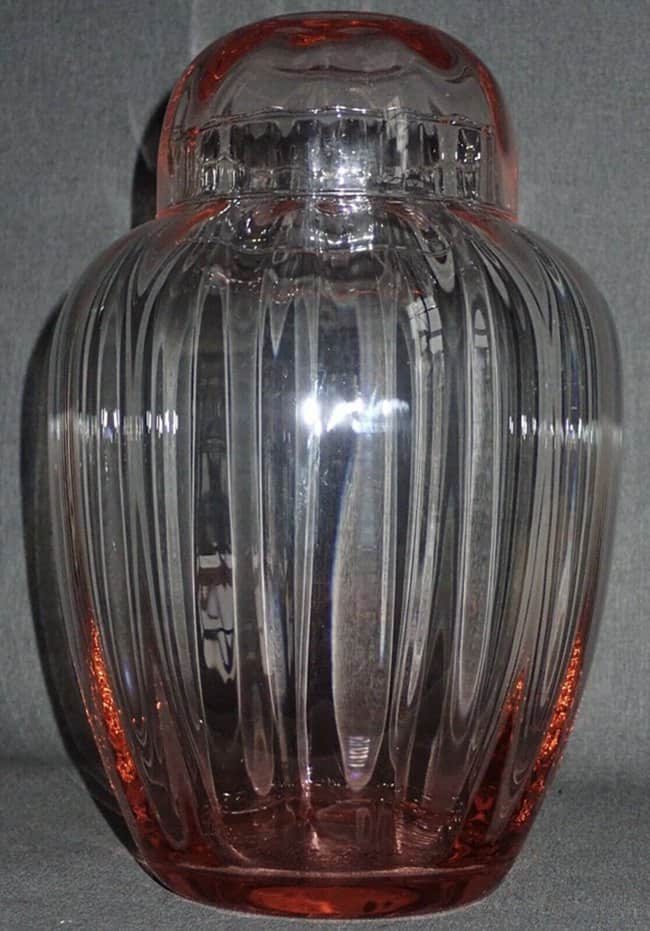
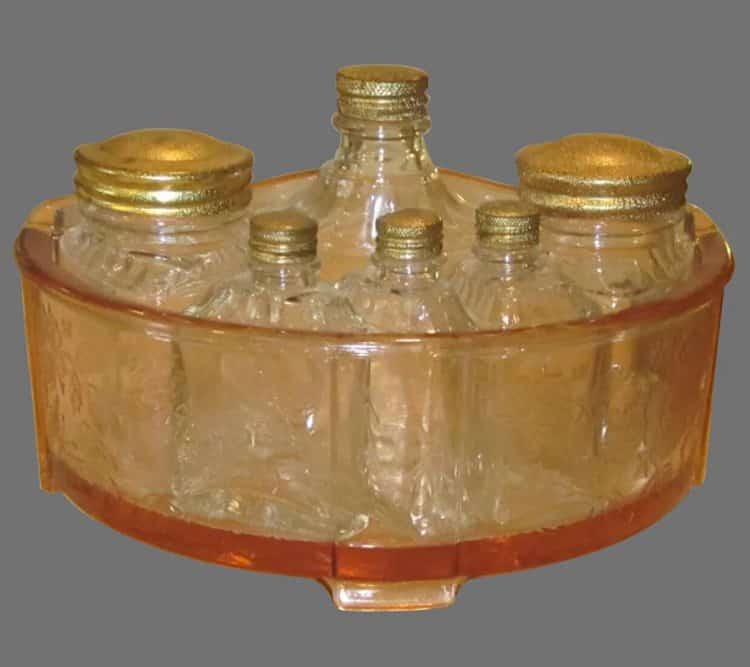
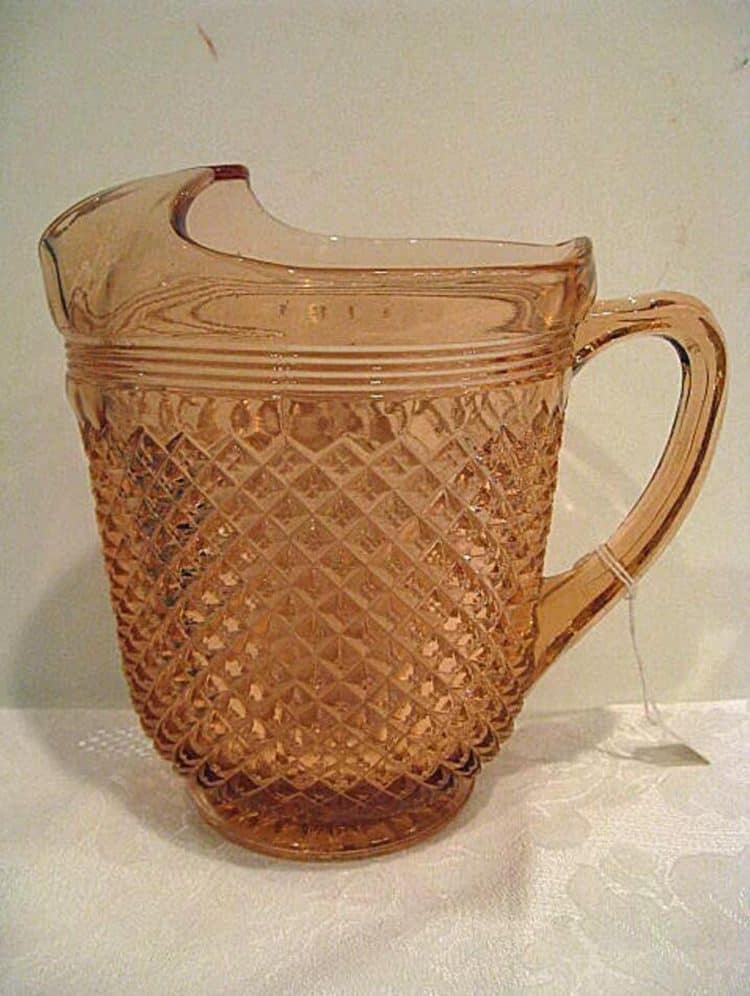
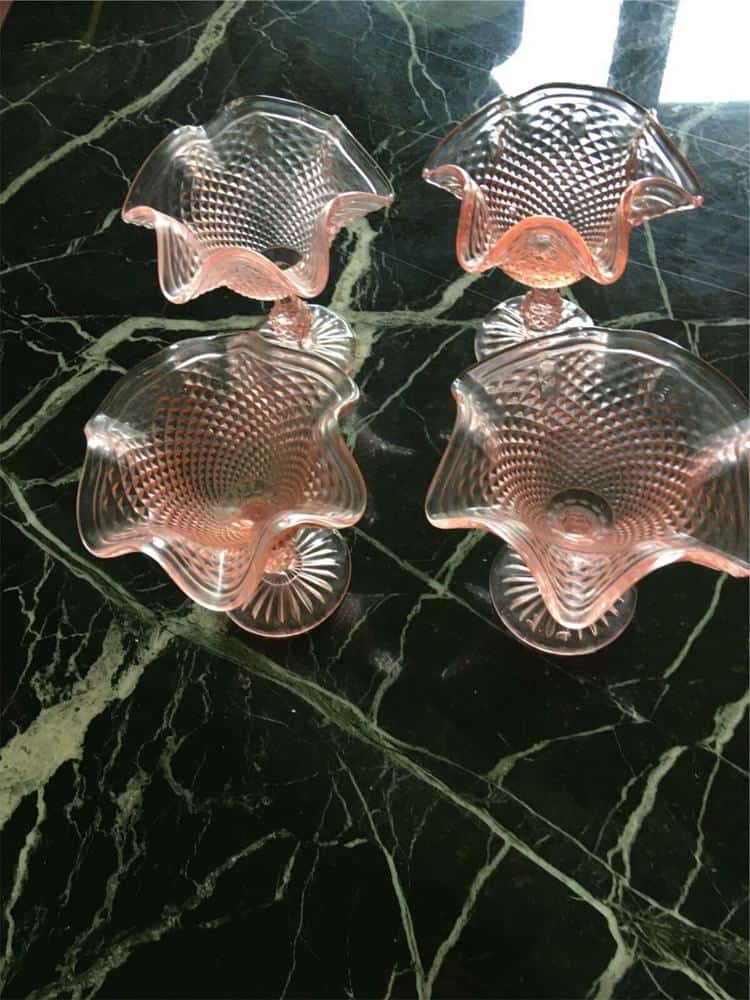
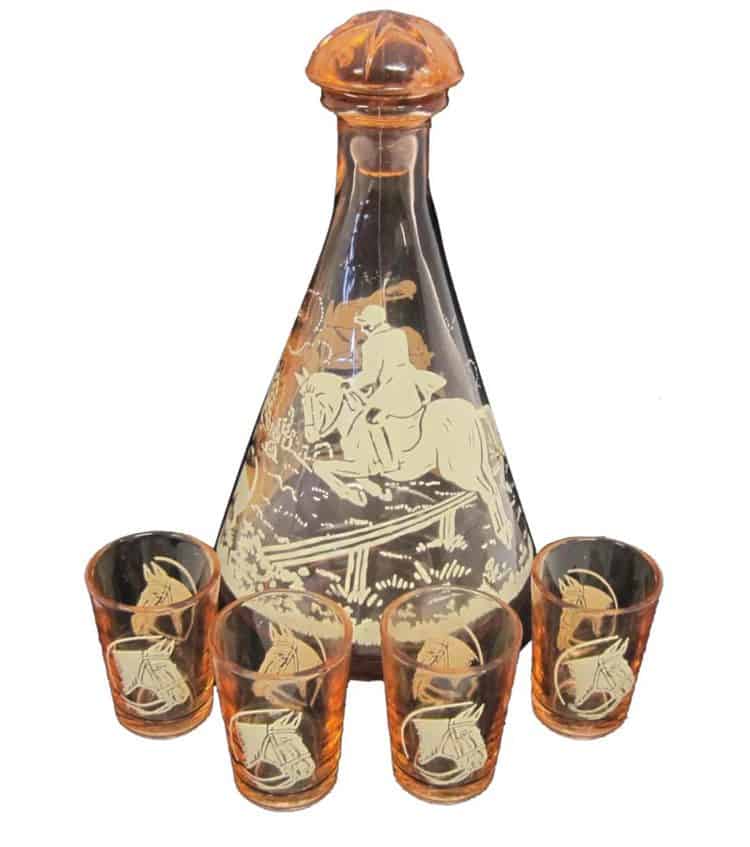
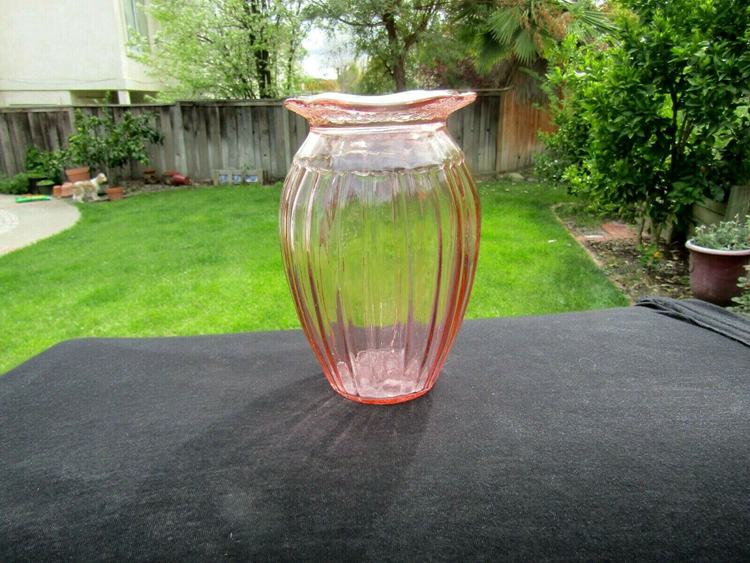
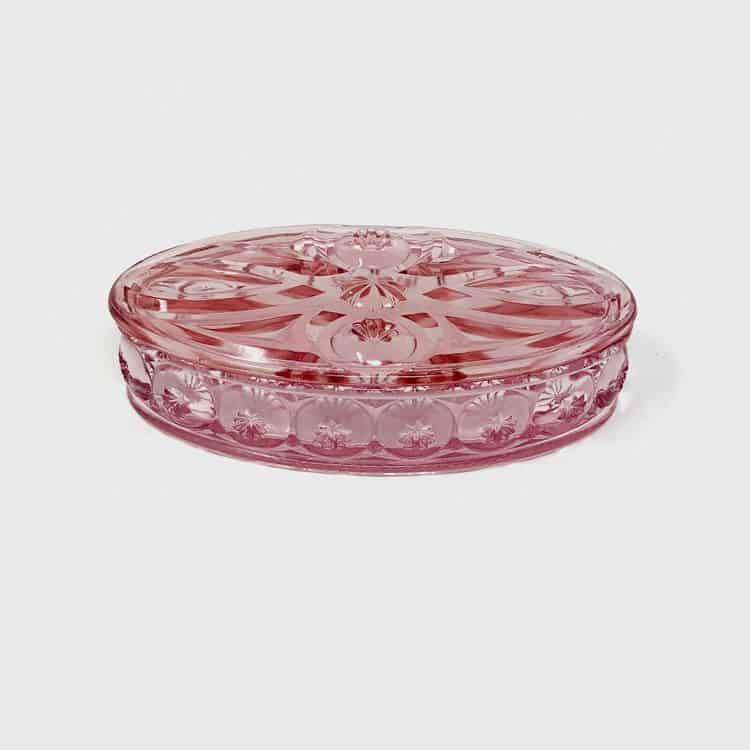
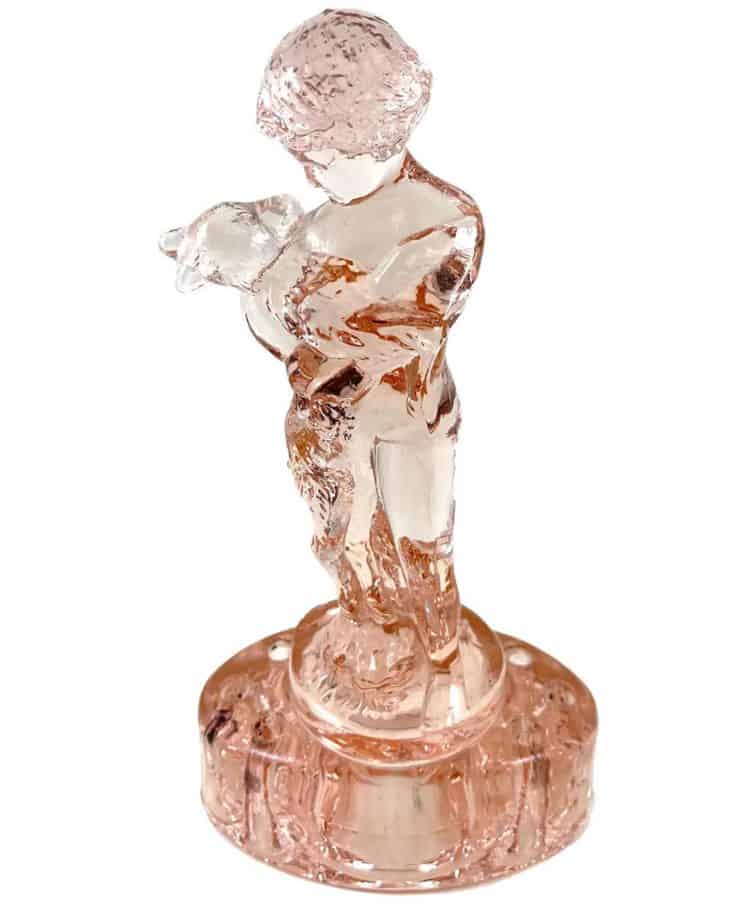
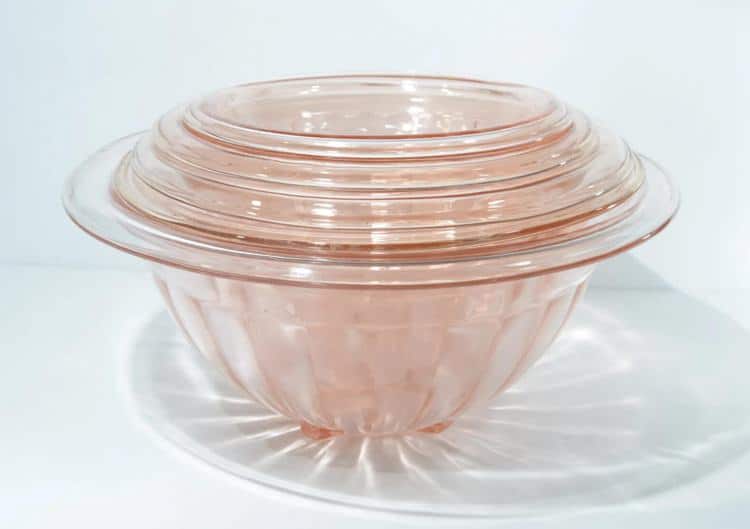
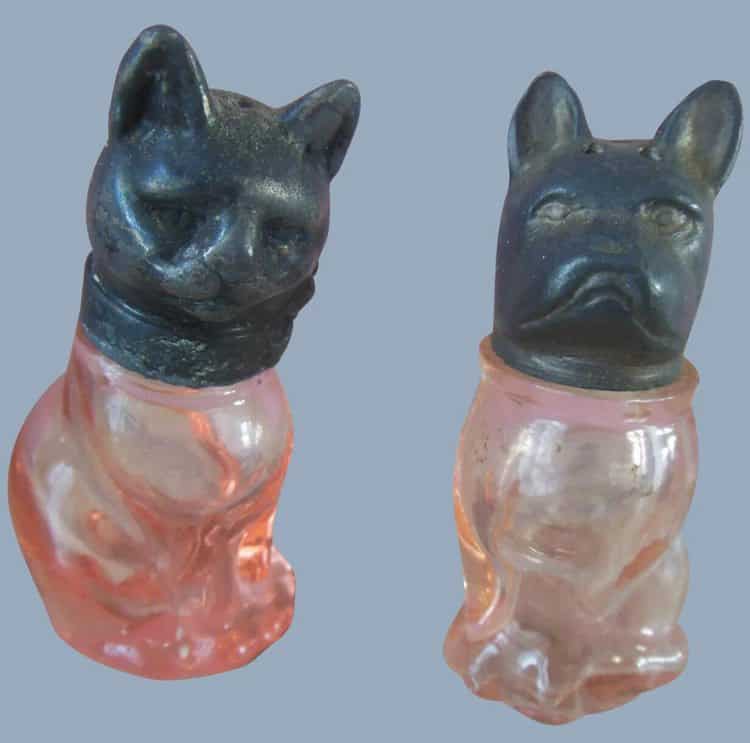
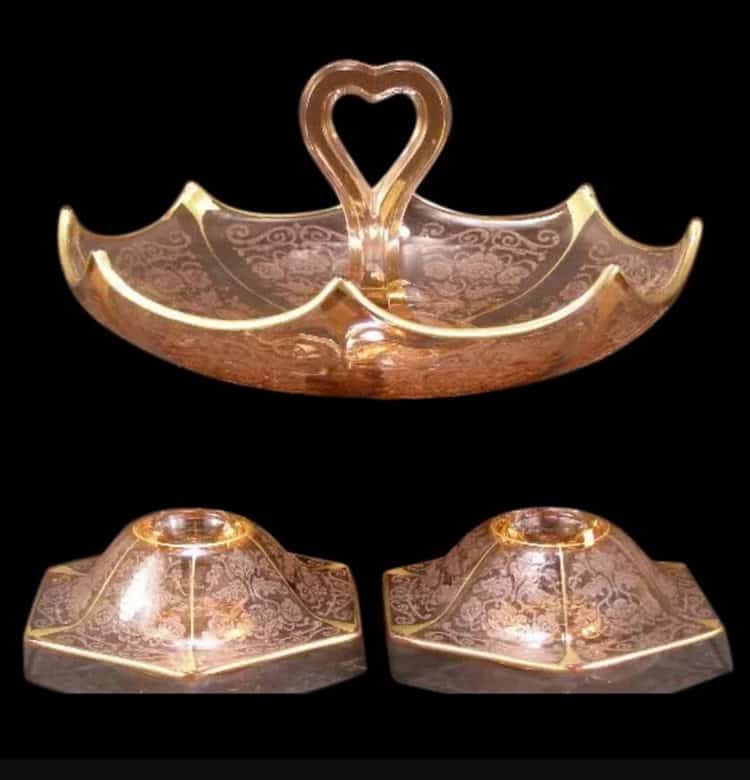
Some other pieces can be pricey, and a Macbeth-Evans water pitcher with a set of drinking glasses was sold for $100. One collector paid $200 for a pink Art Deco design perfume bottle in mint condition.
The most expensive was a nearly sold, rare Jeannette mug with a Cherry Blossom pattern in mint condition paid $400. However, you can also find a list of the most valuable pink Depression glass ever sold. Some of these pieces reached $500 to $850 at auctions.
Places to Buy Pink Depression Glass
Your best shot is determining pink Depression glass value before purchasing or selling. It is necessary to identify each piece’s manufacturer, shape, and pattern thanks to a few valuable books, including the most popular:
- Ellen Schroy, Warman’s Depression Glass Field Guide
- Ellen Schroy, Warman’s Depression Glass Price Guide
- Barbara and Jim Mauzy, Mauzy’s Depression Glass
- Barbara and Jim Mauzy, Mauzy’s Rare Depression Glass
- Gene and Cathy Florence, Collector’s Encyclopedia of Depression Glass
The next step is to research the market and distinguish between popular and unpopular Depression glass at the production time. Manufacturers made sought-after pieces in limited amounts, making them rare and highly valuable nowadays.
The most popular places to find pink Depression glassware are:
eBay
It is the top place to purchase and sell pink Depression glass, including individual pieces and sets. Most glassware will cost you a few bucks, while the most desirable items can be worth about $100.
The best part is that items available on this selling site include photos. That will help you check each piece’s overall look, condition, and possible flaws.
Amazon
This site is the second-best place to buy pink Depression glass, thanks to the large selection. The best part is the impressive selection of vintage pieces in all price ranges and quality reproductions.
Replacements, Ltd.
This site specializes in difficult-to-find antique glassware, including pink Depression glassware. Their prices are higher than on similar websites, but they offer things that no one else can.
Auctions and antique stores
Most antique stores sell pink Depression glass at retail prices. Keep in mind that they are typically higher than sales prices because of the commission they take. However, these places are what you look for if you want to buy unique and rare items.
Yard sales and flea markets
These places are excellent options when you look for inexpensive pink Depression glass. Plus, you can bargain with a seller and get the best possible pieces at affordable prices.
Summary
Pink depression glass production lasted from 1929 to 1939 during the Great Depression. It was affordable glassware, and everyone could set aside five cents for a cheap but beautiful crystal substitute. Nowadays, collectors are prepared to pay a couple of tens or even hundreds of dollars for rare pieces.
